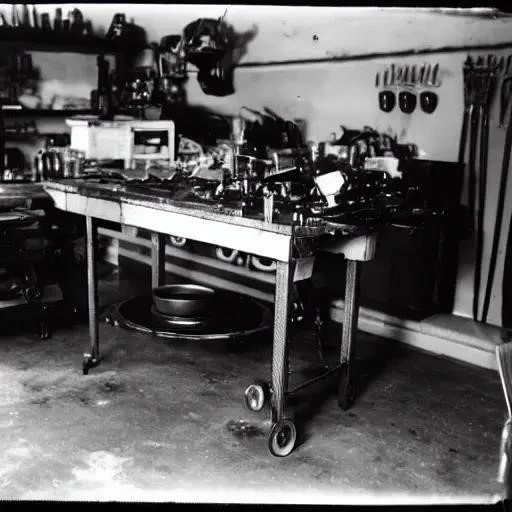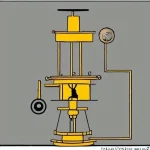The thunderous roar, the scent of high-octane fuel, the heart-stopping acceleration – these are the hallmarks of drag racing, a sport where milliseconds separate victory from defeat. At the very core of this high-stakes spectacle lies the engine, a meticulously engineered marvel pushed to its absolute limits. Every pass down the quarter-mile exacts an incredible toll, stressing components far beyond what any street vehicle endures. It’s a brutal ballet of power and precision, where only the strongest survive. For seasoned racers and aspiring champions alike, understanding the engine’s heartbeat is paramount, recognizing that its peak performance isn’t eternal but a fleeting, magnificent state requiring constant, expert attention.
Far from a mere repair, a professional drag car engine rebuild is a profound undertaking, transforming a worn-out powerhouse into a fire-breathing beast, stronger and more refined than ever before. It’s an intricate dance of art and science, demanding unparalleled expertise, the finest components, and an unwavering commitment to perfection. This isn’t just about replacing parts; it’s about optimizing every single element, from the smallest bearing to the most complex valvetrain, ensuring that when the green light flashes, your machine doesn’t just compete – it dominates. The future of your racing endeavors hinges on this critical process, promising not just renewed life but often an astonishing leap in performance and reliability.
| Aspect | Description |
|---|---|
| Purpose of Rebuild | Restore and enhance peak performance, reliability, and durability of high-stress drag racing engines. |
| Key Benefits | Increased horsepower and torque, improved consistency, extended engine life, reduced risk of catastrophic failure. |
| Critical Stages | Detailed disassembly & inspection, precision machining (honing, grinding), advanced component selection, meticulous blueprinting & assembly, dyno testing & tuning. |
| Required Expertise | Specialized knowledge of racing engine dynamics, metallurgy, fluid dynamics, and tuning principles. |
| Technological Advancements | CNC machining, advanced material science (e.g., lightweight alloys, ceramic coatings), sophisticated data logging, and predictive analytics. |
| Industry Impact | Drives innovation in automotive engineering, pushes performance boundaries, and fosters a competitive, high-tech racing environment. |
| Reference Link | NHRA Tech & Race Info |
The Anatomy of Acceleration: Why Precision is Paramount
Every single component within a drag engine operates under immense duress. Pistons hurtle up and down thousands of times per minute, connecting rods withstand incredible tensile and compressive forces, and crankshafts endure rotational stress that would shatter lesser metals. A professional rebuild, therefore, begins with an incredibly detailed inspection, a forensic examination revealing every micro-fracture, every tell-tale sign of metal fatigue. By meticulously assessing each part, from the valve springs to the main bearings, experienced technicians can identify weaknesses before they become catastrophic failures, safeguarding both investment and, crucially, safety. This stage is akin to a surgeon diagnosing a critical ailment, where thoroughness directly correlates with future vitality.
Following diagnosis, the process transitions into a realm of extreme precision engineering. Cylinder walls are honed to microscopic tolerances, ensuring optimal ring sealing and minimizing friction. Crankshafts are expertly ground and polished, achieving perfect balance and reducing parasitic losses. Valve seats are meticulously recut, maximizing airflow and combustion efficiency. This isn’t just about returning parts to their original specifications; it’s about exceeding them, often with tighter tolerances and superior finishes than the factory provided. Modern machining capabilities, utilizing advanced CNC technology, allow for astonishing levels of accuracy, creating an engine that is not merely good as new but demonstrably better.
Beyond Parts: The Science of Superiority and Expert Hands
Choosing the right components is another critical facet, a strategic decision influencing every aspect of the engine’s future performance. Gone are the days of simply swapping out worn parts for stock replacements. Today’s racing engines benefit from a wealth of high-performance aftermarket options: forged pistons capable of withstanding extreme heat and pressure, lightweight connecting rods that reduce reciprocating mass, and camshafts precisely designed to optimize valve lift and duration for specific power bands. By integrating insights from cutting-edge material science and fluid dynamics, expert builders select parts that collectively contribute to a harmonious, power-generating symphony. This carefully curated selection ensures that every ounce of potential is unlocked.
The assembly phase is where the magic truly coalesces. Working in often spotless, controlled environments, skilled technicians meticulously blueprint every aspect. Bearing clearances are measured with micrometers, piston-to-wall clearances are painstakingly checked, and every fastener is torqued to exact specifications, often exceeding factory recommendations for racing applications. This fanatical attention to detail, a hallmark of top-tier engine builders, is what separates a good rebuild from an exceptional one. It’s an artisan’s touch, backed by years of experience and an almost intuitive understanding of how these complex systems interact. The result is an engine that runs smoother, generates more power, and offers unparalleled reliability under the most brutal conditions imaginable.
The Future is Fast: Dyno-Tuned Domination
Once assembled, the reborn engine isn’t immediately unleashed onto the track. It first undergoes rigorous dyno testing, a crucial step where its true potential is measured, refined, and optimized. On the dynamometer, fuel maps are precisely tuned, ignition timing is advanced for maximum horsepower, and every parameter is scrutinized to extract the highest possible performance safely. This data-driven approach, leveraging sophisticated sensors and analytical software, ensures that when your drag car hits the staging lanes, its engine is not only delivering peak power but doing so with remarkable consistency and efficiency. The ongoing advancements in engine management systems and sensor technology are continually pushing these boundaries, promising even greater precision in future rebuilds.
In essence, a drag car engine rebuild is more than just maintenance; it’s an investment in the relentless pursuit of speed, a commitment to pushing the envelope of automotive engineering. It represents a forward-looking perspective, acknowledging that today’s limits are merely tomorrow’s starting points. With expert hands guiding the process, incorporating the latest technologies and an unwavering dedication to excellence, your rebuilt engine isn’t just ready for the next race – it’s poised to rewrite the record books. Embracing this transformative process is not just about keeping pace; it’s about leading the charge, proving that the heart of your drag machine can, indeed, beat stronger and faster than ever before. The future of speed awaits, powered by precision.






